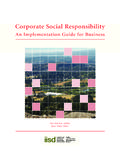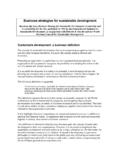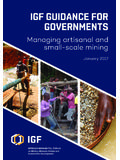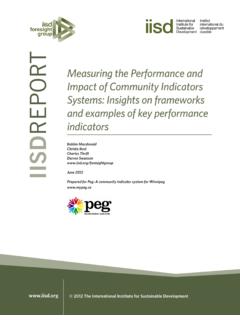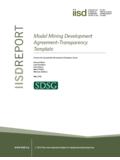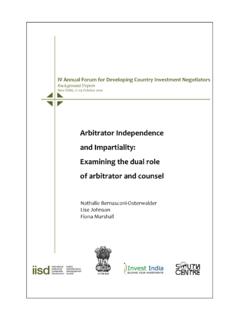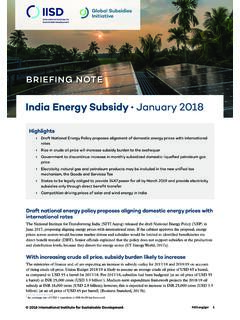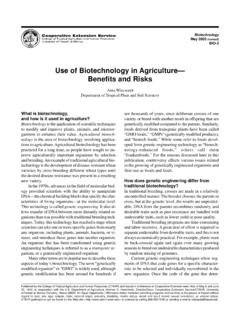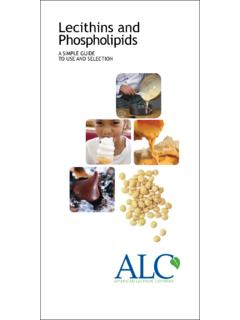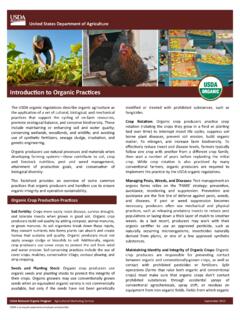Transcription of Global Market Report: Soybeans
1 SUSTAINABLE COMMODITIES. MARKETPLACE SERIES 2019. Global Market report : Soybeans Vivek Voora, Cristina Larrea, and Steffany Bermudez Series Editor: Sofia Bali o October 2020. The demand for Soybeans is currently tied to in the It is also a major export good: nearly Global meat consumption and is expected to 44% of all Soybeans produced in 2017 were exported, grow, fuelled by Asia. accounting for million tonnes at a value of USD. 58 ,46 The overall sector had a total (retail). Soybeans are among the few complete protein vegetable- Market value of around USD billion in based foods with nine essential amino ,2 For this The soybean sector is also highly concentrated, with reason, the soybean has become an important source of cultivation mainly focused in the United States, Brazil, human and animal protein, with 85% of its cultivation and Argentina, with India ranking a distant fourth.
2 Destined for animal feed and the remaining destined for The top three countries together accounted for 80%53. direct human ,5 This king of beans is of total production in 2017 and dominated world mostly crushed into soy oil and meal and is found in exports. This cultivation requires large landmasses: in hundreds of edible and non-edible products, ranging 2017, Soybeans were cultivated on 131 million hectares, from cooking oil, animal grains, vegan food , and milk primarily in a small number of large-scale private to biodiesel and other industrial After plantations in the leading growing countries. Estimates palm oil, soybean oil is the most consumed cooking oil indicate that these large-scale farmers account for over VSS-compliant soybean production accounted for of total soybean production in 2016 and increased to nearly 2% in 2018.
3 Figure 1. Global soybean production trend 2008 2016 and 201826,91. 373,000,000. 353,000,000. 333,000,000. 313,000,000. VSS Compliant Metric Tonnes 293,000,000. Potentially 273,000,000 VSS Compliant 253,000,000 Conventional 233,000,000. 213,000,000. 193,000,000. 2008 2009 2010 2011 2012 2013 2014 2015 2016 2018. Note:VSS-compliant production volumes refer to Soybeans produced in compliance with one or more voluntary sustainability standards (VSSs). Conventional production volumes do not comply with any existing VSSs. Production volumes that are defined as potentially VSS-compliant cannot be definitively listed in either category with the data currently available.
4 This graph has been produced with data reported to IISD, the International Trade Centre, and the Research Institute of Organic Agriculture by the following schemes: the ProTerra Foundation, Organic, and Round Table on Responsible Soy (RTRS).While the analysis was conducted for the period 2008 2016, consistent with other reports in this series, we have also included 2018 figures in this figure to reflect data published in October 2020. 80% of total soybean production, with the remaining specifically at the projected increase in Global meat being in the hands of small-scale consumption, this is expected particularly among the growing middle class in emerging economies, meaning Soybean production grew significantly, from that there will be strong demand for Soybeans as the million to almost 56 million hectares in South America animal feed of However, in the short-term, this from 1961 to 20148,9, driven by world population trend may change.
5 This is due to national lockdowns growth and increased demand for meat, leading and forced closures of slaughterhouses, meat-packing to greater production of soy-based animal facilities, restaurants, hotels, and other meal services in The introduction of herbicide-resistant, genetically response to the COVID-19 crisis, which has significantly modified (GM) Soybeans has also allowed for increased curbed the demand for meat and its derivative products. productivity levels and a smaller workforce, enabling the The massive closure of businesses and the logistical crop's rapid ,9 In the United States, soybean bottlenecks derived from port closures, trade restrictions, cultivation is projected to overtake wheat and corn as and other disruptions in food supply chains55 have the crop covering the greatest area of agricultural land, also affected livestock farmers and, in turn, soybean driven by the increased need for animal feed and the producers since meat production represents the major expansion of soybean exports to China, the world's purchaser for the soybean ,54.
6 Largest soybean Furthermore, the versatility of Soybeans will be a The largest soybean-exporting countries in 2017, by major factor in maintaining demand growth, as the value, were Brazil (USD billion), the United States soybean Market can be segmented into animal feed, (USD billion), and Argentina (USD 3 billion), and food and beverage, personal care, dietary supplements, the largest importing countries were China (USD pharmaceuticals, and biomaterials, including billion), Mexico (USD billion), and the Netherlands At a regional level, Asia is expected to drive soybean (USD billion).6 Soybean-producing countries demand growth.
7 This demand will be led by China, ended up with year-end stocks ranging from 34 million considering that, in the last decade, the country to 52 million tonnes from 2014 to This trend accounted for almost two thirds of Global demand is projected to continue into 2020, with soybean- Europe is the second-largest Market for producing countries expected to end the production year Soybeans , consuming approximately 12% of Global with approximately 47 million tonnes of Given soybean production in It imports mainly the impact of COVID-19 on the food supply chain, soymeal and cake for feed for pigs, poultry, and cattle these soybean stocks could be even higher than expected.
8 And soybean oil to produce Also, many Even with high levels of COVID cases in the main European countries are important trans-shipment hubs, producing countries, the soybean industry continues to meaning that a portion of their imports is re-exported operate, with farmers in the United States, Argentina, in the form of beans or processed and then exported as and Brazil crushing record amounts of ,51. soymeal and However, logistical bottlenecks have limited the crushing, transport, and export of the crop, and farmers in these Recent consumer trends suggest a shift in dietary countries, particularly in Argentina, are considering preferences in Europe and other developed countries stockpiling their production to sell it later for when toward choosing plant-based protein products as a meat Market conditions improve, given the impact of the substitute, given the increasing concerns by private lockdowns and reduced crop ,50.
9 51 This sector actors and governments on the environmental might have an effect on soybean prices if accumulated and health impacts of producing and consuming animal soybean stocks of soybean get dumped all at once into meat. This trend is expected to benefit the consumption international markets. of soybean-based products such as tofu,57,58 soybean- based dairy substitutes, and processed meat. In fact, Demand for Soybeans is projected to continue growing some of the big players in the fast- food industry, such in the coming years, due to a variety of factors. The as retailers and supermarkets in North America and consumption of meat and soy-based health products Europe, are increasingly selling plant-based meat is on the rise, while population figures are slated to substitutes to respond to consumer increase, and policy-makers are more supportive of biodiesel as a fuel ,12,13,53 Looking Another development in the soybean Market is the initial adoption of voluntary sustainability standards (VSSs), LIVELIHOODS.
10 With varying environmental and social requirements and Large-scale farmers account for over level of assurance,80 by soybean producers. However, the 80% of total soybean production. VSS adoption rate remains low: in 2016, only of The remainder 20% is in the hands of the Market was made up of VSS-compliant Soybeans , small-scale farmers. accounting for 5,417,036 tonnes. Soybeans that were United States, Brazil, and Argentina account for potentially VSS-compliant represented , while 80% of total production. conventional soybean production made up of the Market (see Figure 1).26 In the period 2016 2018, the volume of VSS-compliant Soybeans increased at soil quality.
